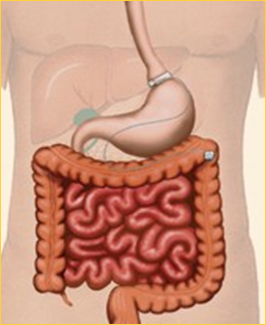Laparoscopic Adjustable Gastric Band (Lap Band)
How does the Lap Band work?
The band makes a pouch that can hold only small amount of food due to resistance and giving you a feeling of fullness. The goal is to reduce hunger and overall calorie intake. The Lap Band is a purely restrictive procedure.
How is the Lap Band placed?
Surgery is done laparoscopically through small incisions.
This procedure is done by placing an adjustable band around the upper part of the stomach. The band is stitched in place and connected to an access port with tubing. The access port will be placed below the skin at the end of the procedure. The access port allows us to adjust the diameter of the band during office visits.

How Much Weight Will You Lose?
Excess weight loss with the adjustable gastric band is lower than with gastric bypass or sleeve gastrectomy and less dramatic. Official numbers for amount of excess weight loss are anywhere between 40-80%. Increased weight loss has been reported at Bariatric centers of excellence due to proper pre-op education and post-operative support groups.
When and how often is the band filled?
Please remember, the gastric band is not filled during surgery. It may not feel restrictive immediately after placement. The first adjustment is scheduled a couple weeks after surgery and further fills are scheduled thereafter.
What are some advantages of Gastric Banding?
- Excess weight loss of approximately 25 – 45 percent of excess body weight in first twelve months
- Does not involve cutting of the stomach or rerouting of the intestines
- Shorter stay in the hospital
- Low complication and mortality rate (around 0.1%)
- Lowest risk for vitamin/mineral deficiencies
- Reversible and adjustable
What are some disadvantages of Gastric Banding?
- Unsatisfactory weight loss
- A foreign body remains in the body
- Band slippage or erosion into stomach
- Esophageal dilation
- Highest rate of re-operation

